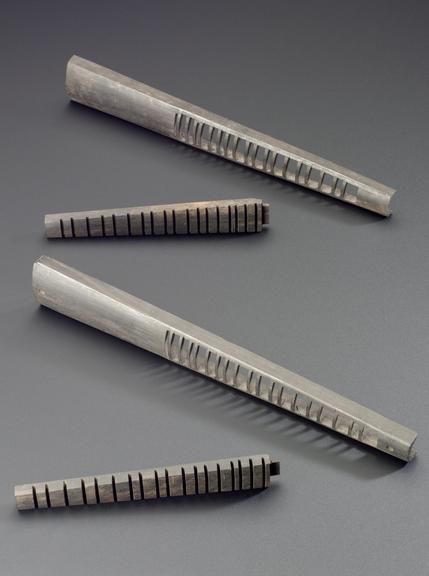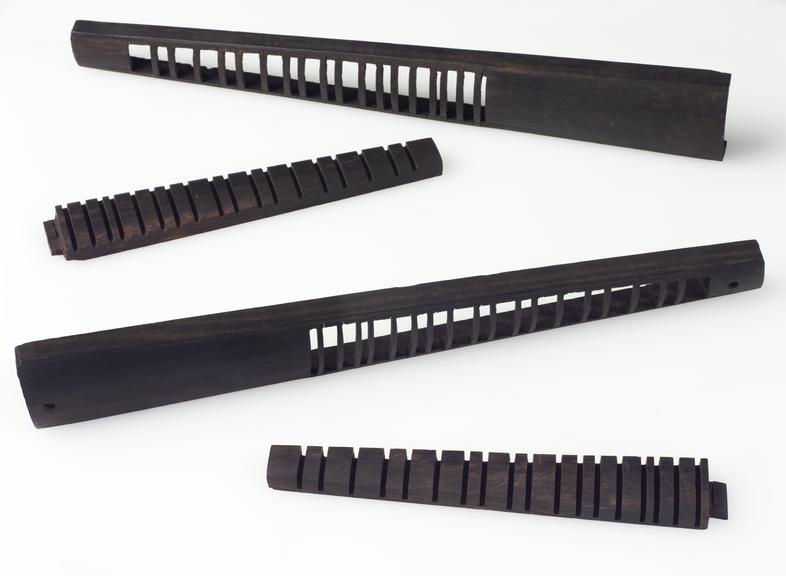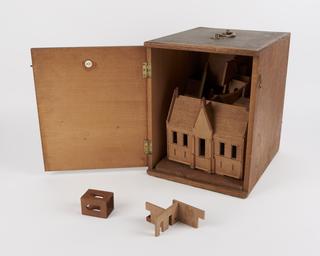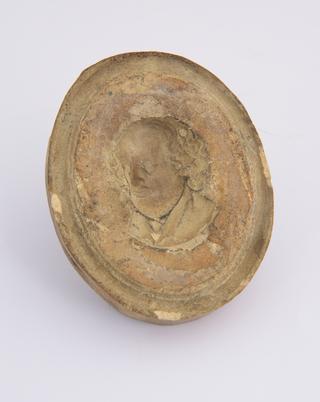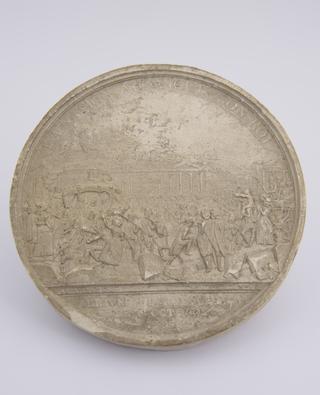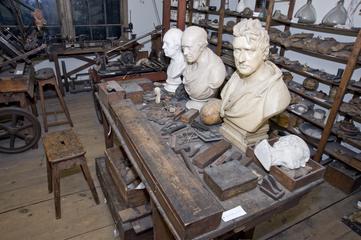
Pair of ebony violin fingerboard shape and sized hollow fabrications
- maker:
- James Watt





One of eight long pieces of ebony, partly pierced - violin fingerboards made by James Watt, Glasgow, Scotland, to the design of Charles Clagget, 1758-1769.
This item is part of the contents of the workshop that Scottish engineer James Watt developed at his home, Heathfield, at Handsworth, Birmingham. Although Watt is best known for his work on the steam engine, his workshop contains a wide variety of objects from many different projects, from chemistry to sculpture-copying.
The description of the item was written by Edward Collins, the land agent responsible for Heathfield when the workshop was given to the Science Museum in 1924. Collins could not always identify what he was looking at, but always described what he saw clearly. This has allowed his descriptions to form the basis of subsequent research.
These are Ebony violin fingerboard, one of eight, shape and sized solid fabrications, by James Watt, Glasgow, Scotland, 1758-1769. These fabrications are cut with slots across their length, and as such some of them fit inside 1924-792/1405/1. The slots appear to have been cut with the use of the three small circular saw blades 1924-792/551.
Only these relics of James Watt’s violin making survive in his workshop. The fingerboards are Charles Clagget’s specially shaped design to help novices to learn where to place their fingers - Clagget commissioned Watt to make these as a trial. The fingerboard comprises two interlocking parts, with one capable of being raised up in a way the frets on a guitar are, helping to guide the novice violinist's fingers.
These fabrications are roughly the overall shape and size of the fingerboard of a violin, though the dimensions vary from one example to another, and have a convex surface. They comprise straight side-bars united by solid pieces toward either end leaving an opening that is bridged by a number of bars running across. The openings would be filled by a second part making up a complete fingerboard when the two were pressed together, and present alongside in the workshop (inv. 1924-792/1406). They have been cut with the three small circular saw blades also present in the workshop (inv.1924-792/551)
Details
- Category:
- James Watt's Garret Workshop
- Object Number:
- 1924-792/1405/1
- Materials:
- ebony (wood)
- type:
- component - object
- credit:
- Major J.M. Gibson-Watt
